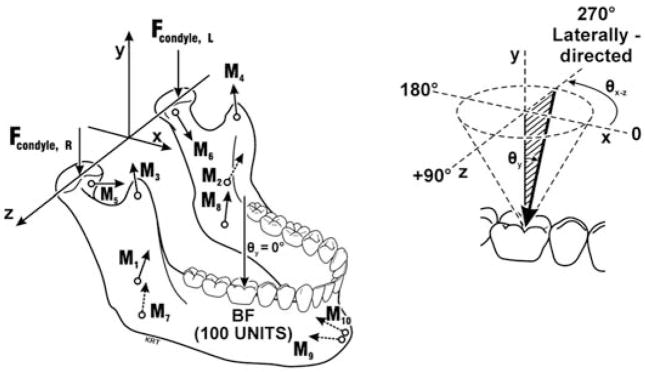Figure 1.
Force vectors involved in numerical models of isometric biting in humans. Forces of biting (BF, 100 units), at the joints (Fcondyle), and representing five muscle pairs (M1,2=masseter, M3,4=anterior temporalis, M5,6= lateral pterygoid, M7, 8= medial pterygoid, M9,10=anterior digastric muscles) are illustrated. The axis system used to characterize the relative positions of the condyles, teeth, and muscle vectors, based on an individual’s anatomy, is shown also. Force magnitudes were expressed as percentages of BF. Enlargement (upper right) shows the azimuth angle (θxz°), measured parallel to the occlusal plane, which varies between 0 and 359°, and the vertical angle (θy°) where θy=0° is normal to the occlusal plane. For example, laterally-directed molar BFs had θxz=270° and θy=20°, 40°, and were biting angles 2, 3, respectively. (Modified from previous work.26)

